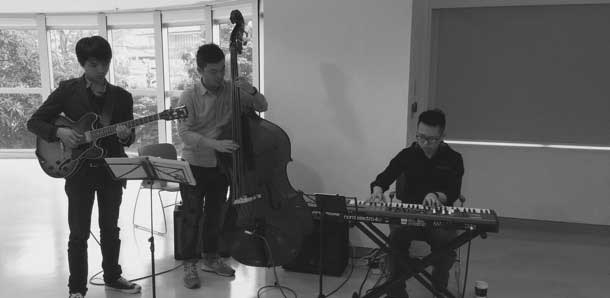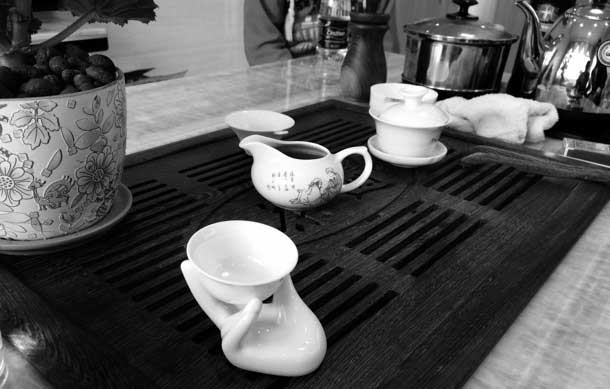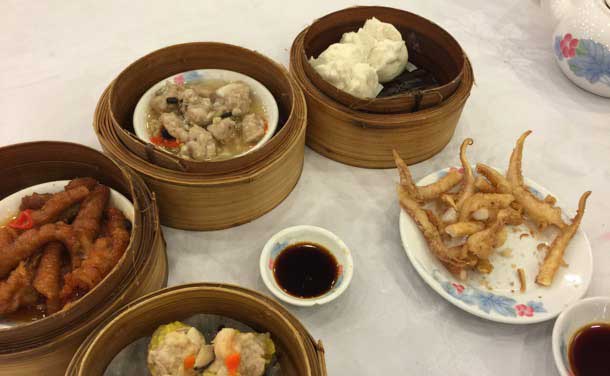Frederick Winslow Taylor was repulsed by waste and with a stopwatch and a clipboard he set about inventing a productivity revolution. Using modular parts in a division of labor, Taylor made it possible for workers to specialize, and specialists were then quicker to master competencies to produce widgets at scale.
Today, silos in large organizations are a logical extension of specialization, almost without noticing, because it’s baked into our idea of what we think work is. Problems occur when we find ourselves among disparate cohorts of specialists from our respective silos who increasingly feel the need to agree to disagree. Stalemates obstruct progress and the value of our organizations consequently erodes. (See Figure 1).

Friction surfaces with people on the project team when they:
- Have not received a complete education into how the project team works and what that means for them
- Have different performance objectives from one another, making true collaboration nearly impossible
- Know their own job function, but don’t know how that function connects to other functions that are instrumental to the design and delivery of products and services
- Cannot articulate a unified story on the way in which design, architecture, and development decisions are interconnected with user needs and with each other
- Have no defined criteria to help them weigh, score, or prioritize features, which implies that they don’t know why they’re working on what they’re working on
- Speak from assumptions and ego, but are unclear about how to validate their assumptions based on user stories, or are unwilling to do so
- Don’t have access to users or see understanding user needs as the responsibility of researchers or other roles rather than as a shared responsibility of the team
What if I …
Rather than waiting for a top-down response from a CEO or the head of HR, we suggest starting with changes from within ourselves, changes that affect our personal habits, routines, and mental models. Changes that ripple outward gently, if not effortlessly, with every conversation available on a project in front of us today (see Figure 2).
What if I:
- Possess all the social permission I need to change my personal habits?
- Spend an hour of every day examining the potential for significance of this project?
- Begin listening to and imploring others for their motives rather than their threats?
- Replace “What do I stand to lose?” with “What might we all need to gain?”
- Openly discussed which projects I worked on mattered and where the best work felt like play and the best play felt like work?
- Welcomed all disciplines to create a broader “community of aspiration” and signed an implicit contract to make meaningful work for every project we put our hands to?

Intentional Awareness and Routines
Given the frictions silos can create, another challenge in large organizations is the ability to form smaller, nimble project teams that share a common sense of purpose. It’s the ability of such teams to come together and intentionally create something great that enables organizations to achieve stellar results with the help of routines that guide them, not only in becoming better at working well together, but hopefully in getting more enjoyment out of their work. Over time, such teams get better and better at both their individual roles and their ability to work effectively together.
We have observed that teams rarely practice routines with any rigor and typically fail to think about them during project planning or when bringing together a project team. Most of the time, project team members get stuck in an implementation routine that leaves them little time or attention for the other routines.
Here are some project routines to consider.
Defining our intentions
In defining our intentions, team members take the time to interact with one another and their stakeholders and share existing knowledge. They develop a plan and agree upon a project’s focus, exploring how it will determine the quality of project outcomes.
- Plan – A team devotes time to planning ahead rather than just spending time churning on implementation.
- Focus – A team determines what specific elements of a design they need to improve and thus focus on during discussions and critiques. A team deliberately eliminates other, less valuable routines to allow the project team to focus.
Identifying prior assumptions
In identifying assumptions, a team takes a pause from their work to reflect on the evidence they’ve gathered, the approaches they’ve taken, the experiments the project has generated, and the team’s own reasoning to identify their biases and open their minds to external criticism.
In identifying assumptions, a team takes a pause from their work to reflect on the evidence they’ve gathered, the approaches they’ve taken, the experiments the project has generated, and the team’s own reasoning to identify their biases and open their minds to external criticism.
- Walk the wall – A team displays its project artifacts on a wall and collectively reflects on them to understand how all of them interconnect and determine whether there are any issues or opportunities that deserve further attention during the following weeks. For example, they may describe a story that relates to a persona, walk through a layer of the journey map, or list out their assumptions that deserve further investigation through user research.
- Reflect – A team has the time and space to rise above the project details for a bit and reflect on what the team has learned and how they might improve the ways they work and practice together.
- Assess assumptions – A team again has an opportunity to list out its assumptions or sets of assumptions and discuss their source and the evidence available to support or challenge them. Doing so enables the team to determine what features to focus on and set priorities.
- Critique – A team critiques the design and captures structured feedback to improve the design in future iterations. The team can use findings from a critique to discover unknowns that require further user research.
Generating experiments in advance of judgment
When generating experiments, a team envisions changes to the situations and challenges that customers face by creating a multitude of sketches or rough prototypes. The best routines for experimentation enable a team to do this without censoring anyone’s imagination.
- Sketch – A team works at a whiteboard or uses paper and pencil to help them quickly iterate through ideas without committing them to code. This helps them to determine which design solutions deserve further investment of time.
- Envision – This routine is almost the opposite of implement. A team takes the time to consider alternative futures and explore them without critique or the constraints of operational, technical, or other realities.
Sharing observations about a situation
When sharing observations, a team comes together to read stories about people’s behavior and record them in the team’s collective memory. This routine enables a team to identify surprising or deeply memorable situations that deserve further analysis by the whole team.
- Tell stories – A team shares with other team members the stories that they’ve collected during user research, interprets the stories, makes sense of their observations, and determines what artifacts would give their observations and insights life.
- Share assumptions – A team lists their assumptions, discussing their source and the evidence available to support them and either challenges or accepts assumptions or sets of assumptions. This helps a team to prioritize certain features by determining what features deserve more of the team’s time, focus, and attention and which features require more research or further design iterations.
Interpreting everyone’s observations
In interpreting observations, a team must make sense of what they do and don’t know.
- Deconstruct – A team looks at the available data together and makes sense of it by applying different lenses before determining what it means.
- Aggregate – After deconstructing and making sense of the data to determine what it might mean, a team aggregates groupings; for example, features and feature sets, a roadmap, design principles, or target goals for the next release. Aggregating helps a team to take stock of what it’s learned and decide whether it must iterate the project team’s artifacts.
- Join the dots – A team joins observations and insights from its various artifacts. For example, what issue is a persona having that may have implications for designing a screen, or affecting an interaction in a customer journey that could affect the overall offering. This helps project team members to look beyond the viewpoint of their own function and explore other parts of the story that could help a product or service to be more successful.
As an owner and facilitator of these routines, you can work the routines into your projects and practice them as we iterate designs so that people get the time necessary to improve their skillsets related to roles (see Figure 3).

Roles
Some of our work requires that we focus our minds and delve deeply into design details, while other work requires us to take a step back to see how the elements of our work connect with one another in delivering solutions to well-identified needs that are part of a broader narrative. As members of project teams, we can play an important role in helping our teams to work more effectively, whether by advancing ideas or recognizing when it’s time to consider alternative approaches.
Teammates may play the following roles as they work with routines:
- Facilitator – As facilitators, we can define approaches to guiding the process of informing, sense-making, and evaluating. We can craft agendas for working sessions and identify what problems need attention. We can manage interactions between functions, aggregate a team’s findings, and map these to shared artifacts. We can identify themes that require further study and set goals for the team’s next working sessions.
- Mentor – As mentors, we should be aware of approaches and skills that require ongoing development and practice and organize safe spaces in which people can practice them, using them over and over again during working sessions and across projects. Mentors should work closely with facilitators and custodians to identify the knowledge that the team has captured and map it to a learning program for team members with a focus on informing, sense-making, and evaluating.
- Connector – As connectors, we connect people’s skills and roles and create artifacts that help bridge gaps and make interactions between people feel more fluid.
- Custodian – As custodians, we maintain the knowledge base that forms over time and leverage it in creating approaches and courses that help our teammates on projects to get better at what they do.
Integrated and Meaningful Work
Delivering projects against a static set of requirements without taking a break to reflect on the project and get a clear outlook is a sure way to lose perspective and stifle creativity. Performing work only for the money or in naive compliance requires us to postpone—and eventually ignore—the consequences and significance of the projects that we are working on.
While profit and loss offer lenses into the performance of work, it may do so without recognition to the what Foucault called the “truth effects,” such as personal meaning, corporate purpose, or social benefit.
Ways for finding significance may include asking yourself these type of questions:
- Why am I doing this project?
- How can it matter to me one year from now?
- How is my team dependent on success?
- How will that matter five years from now?
- How is my company dependent on success?
- How might that matter to history?
We need a deliberate and constant investment in routines involving learning, improving, and maturing as part of integrated practices and a clear identification of the project roles necessary so that teammates can build trust with one another, help others on the team, and keep the team together over time.
This effort may include defining a well-understood, comfortable, open, inviting project language. When a team defines a project’s purpose and artifacts together then iterates them over time and even across successive projects, the learning environment matures iteratively as part of the project experience.
[bluebox]
More Reading
- Being Human by Daniel Szuc and Josephine Wong. Why it’s still important to understand people as a core of our practice.
- GDP Is a Wildly Flawed Measure for the Digital Age by Barry Libert and Megan Beck. Considerations to new measures of success.
- If you’re going to vent about your problems, do it right by Julia Case-Levine. Expressing problems towards healthier relationships.
- Integrated Approaches to Constant Personal Learning, Improvement, and Maturity by Josephine Wong, Daniel Szuc, and Michael Davis-Burchat. Consider integrated practices in cross-disciplinary ways of working.
- The Leader’s New Work: Building Learning Organizations by Peter M. Senge. The importance of life learning as a constant.
- The Management Myth by Matthew Stewart. Historic reference to Taylor and industrial-age thinking.
- The Remarkable Advantage of Abundant Thinking. Setting up contexts for people to thrive.
- Viktor Frankl on the Human Search for Meaning by Maria Popova. An excellent starting point on the topic of meaning.
- What Makes Work Meaningful—Or Meaningless by Catherine Bailey and Adrian Madden. Covers a range of occupations in search of meaning.
[/bluebox]
